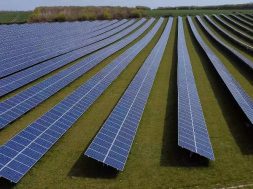
Harnessing the Power of Algorithms in Solar Photovoltaic Technology: Unveiling the Secrets of PV Parameters – EQ
In Short : Solar photovoltaic (PV) technology is undergoing a transformation with the integration of advanced algorithms. These algorithms unveil insights into crucial PV parameters, enhancing the efficiency and performance of solar energy systems. By harnessing the power of algorithms, researchers and engineers can optimize PV operations, extract valuable data, and contribute to the advancement of sustainable energy solutions.
In Detail : As global energy demands continue to rise, the search for alternative renewable energy sources is more pressing than ever. Solar photovoltaic (PV) technology is one of the most promising alternatives, but a significant information gap exists in the PV module parameters provided by vendors and manufacturers. This gap hinders the accurate simulation of PV modules, making it more challenging to optimize their performance. However, a solution is emerging in the form of metaheuristic algorithms designed to accurately identify the unknown parameters of PV models.
Metaheuristic Algorithms: The Key to PV Parameter Identification
Metaheuristic algorithms such as the nutcracker optimizer, Northern Goshawk Optimization (NGO) algorithm, tree seed algorithm (TSA), seagull optimization algorithm (SOA), and war strategy optimization (WSO) algorithm have been developed to address this challenge. These powerful computing strategies are capable of extracting the near-optimal values for PV parameters, helping to improve the overall efficiency and effectiveness of solar energy systems.
One of the most promising developments in this area is the Kepler optimization algorithm (KOA), a tool specifically designed to handle continuous optimization problems. The KOA has been further enhanced through the creation of a new variant known as the HKOA, which combines the KOA with ranking based update and exploitation improvement mechanisms. The HKOA has shown significant success in extracting near-optimal values for the parameters of PV models, outperforming other algorithms and providing more accurate estimations of PV parameters.
Machine Learning and Solar Irradiance Prediction
Machine learning and deep learning algorithms also play a crucial role in optimizing solar energy systems, particularly in the area of solar irradiance prediction. Predicting solar irradiance is a key factor in maximizing the efficiency of solar power systems, and accurate forecasts can be achieved through the use of appropriate machine-learning algorithms. A comparative study on different algorithms performed on a three-year dataset from Izmir, Turkey, has thrown light on the potential for further optimization of solar energy systems.
Maximizing Power with Metaheuristic Algorithms
Metaheuristic algorithms have also proven useful in maximum power point tracking (MPPT) applications in solar PV models. These applications, however, are not without their limitations. To address these, researchers have developed a control algorithm that has demonstrated high MPPT efficiency in experimental studies.
Techniques for PV Panel Fault Detection
Ensuring the proper functioning of PV panels is essential for optimal energy production. Various detection techniques for PV panel overlays and faults have been developed, including image processing, deep learning methods, and other non-image processing methods. A comprehensive survey of these techniques has categorized them into three main categories, each with its own advantages and disadvantages.
Techno-Economic Optimization of Isolated Microgrids
Renewable energy sources like solar panels are also being used to power isolated microgrids, a development that brings its own set of challenges. These include striking the right balance between technical criteria and environmental concerns when deciding on PV, wind turbine, battery energy storage unit, and diesel generator sizes. To address this, researchers have developed the Improved Salp Swarm Algorithm (ISSA) with a position adaptation mechanism. The ISSA approach has proven superior in terms of cost-effectiveness and other performance metrics, demonstrating the potential of hybrid renewable energy systems for powering off-grid regions.
In conclusion, the use of metaheuristic and machine learning algorithms in solar PV technology is transforming the way we harness solar energy, enabling greater efficiency and more effective use of this abundant renewable resource. As research in this field continues, we can look forward to further breakthroughs in renewable energy technology and a greener, more sustainable future.















